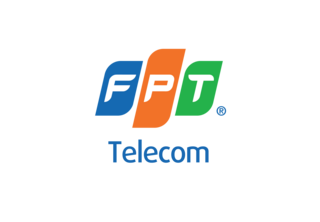
She focuses on improving company’s operating performance through strategic analysis of financial and other operating data. Her goal is to Car Dealership Accounting drive revenue and profitability for her clients while still providing insight, guidance, financial foresight and industry experience. Cash flow, simply put, is the movement of money in and out of your business. It’s about understanding where your revenue comes from and where your expenses go. Effective cash flow management ensures that you always have enough cash to cover your liabilities and invest in growth opportunities.
Strategy 1: Monitor and Forecast Cash Flow
Set aside the deposit so cash flow isn’t affected if the client cancels within your grace period and you need to return some of it. It’s tedious work, but taking regular inventory can solve cash flow problems before they start. Identify over-ordered stock, which foods are most often wasted, restaurants maintain cash flow or whether you have an in-house theft problem. It also pays to be looking at alternative vendors if food costs are too expensive, or work with the current vendors you have on pricing, so you can keep expenses down.

Staff Training Techniques
Improve inventory control with this collection of free food inventory templates, designed for restaurants, catering businesses, and food service operations. Cash flow management is crucial for running a successful restaurant – it ensures you have the necessary funds to cover everyday expenses and unexpected costs. Keeping a cash reserve can help you weather unexpected income summary expenses and periods of low cash inflow. Try and set aside enough cash to cover at least three to six months of operating costs.
- Your profit and loss statement will tell you exactly how much to need to trim from your expenses and distributions to get back in the black.
- One of the largest recurring expenses in a business, besides payroll, is merchant processing fees.
- Understanding the difference between fixed costs, such as rent and insurance, and variable costs, such as food and labor, is essential.
- Evaluating utility costs, negotiating lease agreements, and adopting energy-efficient equipment can lead to substantial long-term savings.
- You may be booked solid for reservations in December before the holiday break but completely dead in January when the celebrations have subsided.
Make Quarterly Budgets

Kitchen equipment breakdowns, plumbing issues, and other emergency repairs can disrupt business operations and drain cash reserves. Adjust outgoing payments to your vendors, suppliers, and payroll so your restaurant’s bank accounts aren’t taking a hit the same week. An annual budget is helpful, but a quarterly – or seasonal – budget is even better. Like any business, most restaurants are subject to seasonal fluctuations. You may be booked solid for reservations in December before the holiday break but completely dead in January when the celebrations have subsided.
Not Catering or Hosting Private Events? Do It!

Whenever possible, negotiate longer payment terms—net 30, 45, or even 60 days—to help ease pressure on your cash position. Overstocking leads to waste, while understocking can result in lost sales. Unexpected shortfalls are common, as 43% of US mid-market companies rely on inaccurate cash flow forecasts. Weekly tracking gives you real-time visibility into where your money is going, helping you make faster, smarter decisions about staffing, ordering, or cutting unnecessary expenses.
- It’s also nice to have a nest egg so you can rely on your savings instead of leaning on credit if there’s an unexpected expense.
- Also, conduct periodic evaluations of fixed expenses to identify areas where you can cut costs.
- It also provides valuable sales data, allowing you to identify top-performing items and remove underperformers from your menu.
- Additionally, conducting thorough training for your staff on efficient service practices can minimize labor costs while boosting customer satisfaction and overall productivity.
- Reducing unnecessary expenses can free up cash for other areas of your business.
Strategy 2: Efficient Inventory Management
By managing your cash flow effectively as a restaurateur, you can avoid financial crises and keep your business on a steady path to success. An additional approach to restaurant cash flow management is to evaluate current inventory levels. Stocking too much of the wrong product (perishable items) negatively impacts cash flow.
- Please consult with an expert if you need specific advice for your business.
- If business fluctuates in your restaurant, be imaginative to get your seats filled.
- Katie is a former Content Marketing Specialist at TouchBistro where she writes about food and restaurant experiences.
- Payroll management in the restaurant industry is complex and time-consuming.
- Your customers are your first line of defense against financial hardship.
- Warren Averett is a top accounting firm providing audit, tax, accounting and consulting services to companies across the Southeast.
- Explore essential profit and loss tracking with these free small business profit and loss templates designed for accurate financial reporting.
If you’re paying invoices too quickly or sitting on too much unused inventory, you’re tying up valuable cash that could be used for more urgent needs. Keeping these costs in check gives you more breathing room, more flexibility, and ultimately—more cash in your business. It’s one of the most effective ways to protect your cash flow without cutting corners on quality or service. With a solid projection in place, restaurant owners can feel more confident making investments, hiring, or even launching new restaurant promotions, knowing their cash position is stable.




